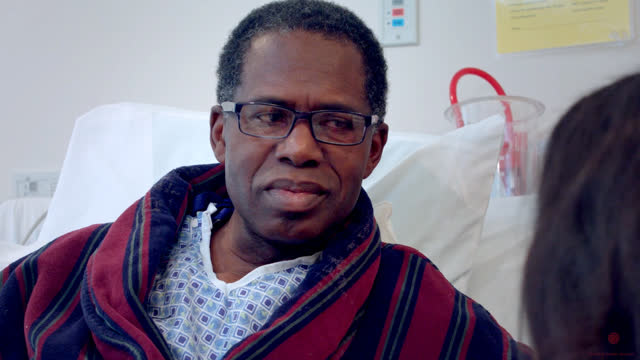Radical Prostatectomy
Surgery Overview
A radical prostatectomy is an operation to remove the prostate gland and some of the tissue around it. It is done to remove prostate cancer. This operation may be done by open surgery. Or it may be done by laparoscopic surgery through small incisions.
Laparoscopic surgery may be done by hand. But some doctors now do it by guiding robotic arms that hold the surgery tools. This is called robot-assisted prostatectomy.
Open surgery
In open surgery, the surgeon makes an incision to reach the prostate gland. Depending on the case, the incision is made either in the lower belly or in the perineum between the anus and the scrotum.
When the incision is made in the lower belly, it is called the retropubic approach. The surgeon may also remove lymph nodes in the area so that they can be tested for cancer.
When the incision is made in the perineum, it is called the perineal approach. The recovery time after this surgery may be shorter than with the retropubic approach. If the surgeon wants to remove lymph nodes for testing, he or she must make a separate incision. If the lymph nodes are believed to be free of cancer based on the grade of the cancer and results of the PSA test, the surgeon may not remove lymph nodes.
Laparoscopic surgery
For laparoscopic surgery, the surgeon makes several small incisions in the belly. A lighted viewing instrument called a laparoscope is inserted into one of the incisions. The surgeon uses special instruments to reach and remove the prostate through the other incisions.
Robotic-assisted laparoscopic radical prostatectomy is surgery done through small incisions in the belly with robotic arms that translate the surgeon’s hand motions into finer and more precise action. This surgery requires specially trained doctors.
The main goal of either open or laparoscopic surgery is to remove all the cancer. Sometimes that means removing the prostate and the tissues around it, including a set of nerves to the penis that affect the man’s ability to have an erection. Some tumors can be removed using a nerve-sparing technique. This means carefully cutting around those nerves to leave them intact. Nerve-sparing surgery sometimes preserves the man’s ability to have an erection.
What To Expect
Prostatectomy usually requires general anesthesia and a hospital stay of 2 to 4 days. A thin, flexible tube called a catheter usually is left in your bladder to drain your urine for 1 to 2 weeks. Your doctor will give you instructions about how to care for your catheter at home. Bladder control can be poor for a few months after the catheter is removed.
Although prostatectomy often removes all cancer cells, be sure to get follow-up care. This may lead to early detection and treatment if your cancer comes back. Your regular follow-up program may include:
- Physical exams.
- Prostate-specific antigen (PSA) tests, to watch PSA levels and to measure the speed of any changes in those levels.
- Digital rectal exams.
- Biopsies as needed, to look at suspicious tissue.
Why It Is Done
Radical prostatectomy is most often used if testing shows that the cancer has not spread outside the prostate.
Radical prostatectomy is sometimes used to relieve urinary obstruction in men with more advanced (stage III) cancer. But a different operation, called a transurethral resection of the prostate (TURP), is most often used for that purpose. Surgery usually is not considered a cure for advanced cancer. But it can help relieve symptoms.
How Well It Works
Radical prostatectomy is generally effective in treating prostate cancer that has not spread outside the prostate. This is called localized prostate cancer. Following surgery, the stage of the cancer can be determined based on how far it has spread. PSA levels will drop almost to zero if the surgery successfully removes the cancer and the cancer has not spread. If cancer has spread, advanced cancer may develop even after the prostate has been removed.
For men with localized prostate cancer, surgery works about as well as radiation to treat the cancer. With either treatment, the chance of the cancer spreading is low. One study looked at men who had localized prostate cancer and found that the risk of dying was very low, and about the same, no matter which treatment the men chose.footnote 1
For men with advanced prostate cancer (cancer that has spread out of the prostate but not to the lymph nodes or bones), external-beam radiation and hormone drugs can work better than surgery. This treatment will often control cancer and give men many disease-free years.footnote 2
Studies show that how well you come through the surgery and the extent of your side effects depend more on the skill of your surgeon than on the kind of surgery you have.footnote 3
Risks
Erection problems
Erection problems are one of the serious side effects of radical prostatectomy. The nerves that control a man’s ability to have an erection lie next to the prostate gland. They often are damaged or removed during surgery. Sometimes these nerves can be spared during surgery to preserve erections.
About half of men are able to regain some of their ability to have erections.footnote 4 But this takes time. It can take as little as 3 months. But for most men, it will be 6 months to a year.footnote 5
Recovery depends on:
- Whether the man was able to have an erection before surgery.
- How the surgery affected the nerves that control erections.
- How old the man was at the time of surgery.
Medicines such as sildenafil (Viagra), tadalafil (Cialis), or vardenafil (Levitra) and mechanical aids may help men who are impotent because of treatment. Using medicines soon after surgery may help men regain sexual function. Talk with your doctor about your concerns.
Urinary incontinence
Up to half of all men who have a radical prostatectomy develop urinary incontinence, ranging from a need to wear urinary incontinence pads to occasional dribbling.
The urethra—the tube that carries urine from your bladder—runs through the middle of the doughnut-shaped prostate gland. To remove the prostate, the surgeon must cut the urethra and later reconnect it to the bladder. Evidence shows that the greater the surgeon’s experience and skill in making this reconnection, the lower the rate of incontinence.footnote 6
If urinary leakage continues longer than 1 year, you may need treatment for incontinence after prostatectomy.
Complications
Radical prostatectomy is major surgery. So it carries the same general risks as other major operations, including heart problems, blood clots, allergic reaction to anesthesia, blood loss, and infection of the wound.
Also, these complications can be caused by radical prostatectomy:
- Erection problems
- Urinary incontinence
- Damage to the urethra
- Damage to the rectum
What To Think About
When considering prostatectomy, take into account your personal wishes, age, and any other medical conditions you may have, the stage and grade of your cancer, and your PSA level. Your age and overall health will make a difference in how treatment may affect your quality of life. Any health problems you have before treatment, especially urinary, bowel, or sexual function problems, will affect your recovery. Active surveillance or radiation therapy may be reasonable options for you.
If you and your doctor decide that you need surgery, be sure to choose a highly skilled surgeon at a hospital that has a good success rate. You are more likely to have fewer side effects from prostate surgery when you have a skilled and experienced surgeon.
References
Citations
- Hamdy FC, et al. (2016). 10-year outcomes after monitoring, surgery, or radiotherapy for localized prostate cancer. New England Journal of Medicine, 375(15): 1415–1424. DOI: 10.1056/NEJMoa1606220. Accessed November 3, 2016.
- National Cancer Institute (2012). Prostate Cancer Treatment (PDQ)—Health Professional Version. Available online: http://www.cancer.gov/cancertopics/pdq/treatment/prostate/HealthProfessional.
- Scher HI, et al. (2015). Cancer of the prostate. In VT DeVita Jr et al., eds., DeVita, Hellman, and Rosenberg’s Cancer Principles and Practices of Oncology, 10th ed., pp. 932–980. Philadelphia: Walters Kluwer.
- National Cancer Institute (2012). Prostate Cancer Treatment (PDQ)—Health Professional Version. Available online: http://www.cancer.gov/cancertopics/pdq/treatment/prostate/HealthProfessional.
- Schaeffer EM, et al. (2012). Radical retropubic and perineal prostatectomy. In AJ Wein et al., eds., Campbell-Walsh Urology, 10th ed., vol. 3, pp. 2801–2829. Philadelphia: Saunders.
- Rosenberg JE, Kantoff PW (2011). Prostate cancer. In EG Nabel, ed., ACP Medicine, section 12, chap. 9. Hamilton, ON: BC Decker.
Credits
Current as of: December 19, 2018
Author: Healthwise Staff
Medical Review:E. Gregory Thompson MD – Internal Medicine & Kathleen Romito MD – Family Medicine & Christopher G. Wood MD, FACS – Urology, Oncology
Current as of: December 19, 2018
Author: Healthwise Staff
Medical Review:E. Gregory Thompson MD – Internal Medicine & Kathleen Romito MD – Family Medicine & Christopher G. Wood MD, FACS – Urology, Oncology
This information does not replace the advice of a doctor. Healthwise, Incorporated, disclaims any warranty or liability for your use of this information. Your use of this information means that you agree to the Terms of Use. Learn how we develop our content.





